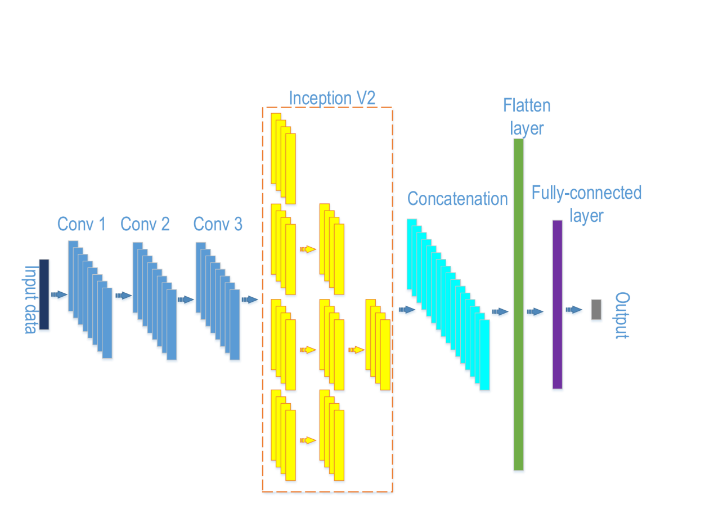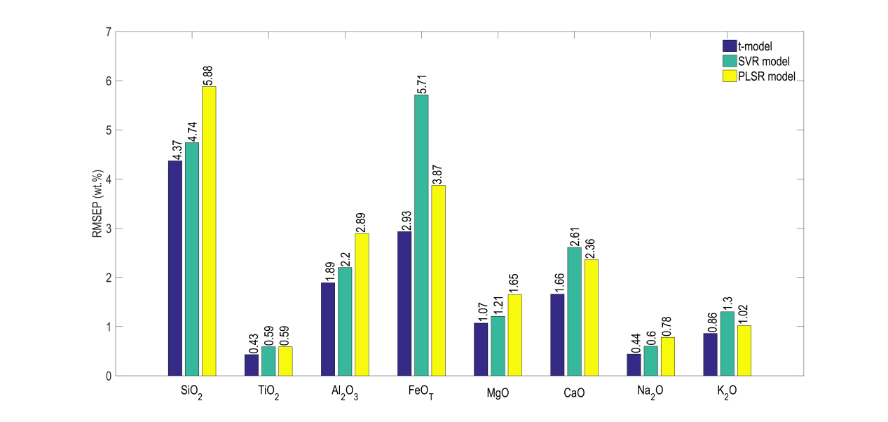Laser-induced breakdown spectroscopy (LIBS) has been applied to many fields for the quantitative analysis of diverse materials. China's "Tianwen-1" will carry a LIBS instrument to detect the surface material composition of Mars. Therefore, improving the prediction accuracy of the elemental composition of soils and rocks by utilizing LIBS is of great significance for Mars exploration.
In this study, we explored LIBS's quantitative analysis for the one-dimensional ChemCam (an instrument containing a LIBS spectrometer and a Remote Micro-Imager) spectral data whose spectra are produced by the ChemCam team using LIBS under the Mars-like atmospheric conditions. We constructed a convolutional neural network (CNN) regression model with unified parameters for all oxides, which is efficient and concise. CNN that has the excellent capability of feature extraction can effectively overcome the chemical matrix effects that impede regression models' prediction accuracy. Firstly, we explored the effects of four activation functions on the performance of the CNN model. The results show that the CNN model with the hyperbolic tangent (tanh) function outperforms the CNN models with the other activation functions (the rectified linear unit function, the linear function, and the Sigmoid function). Secondly, we compared the performance among the CNN models using different optimization methods. The CNN model with the stochastic gradient descent optimization and the initial learning rate = 0.0005 achieves satisfactory performance compared to the other CNN models. Finally, we compared the CNN model's performance, the model based on support vector regression (SVR), and the model based on partial least square regression (PLSR). The results exhibit that the CNN model is superior to the SVR model and the PLSR model for all oxides. Based on the above analysis, we conclude that the CNN regression model can effectively improve LIBS's prediction accuracy.
The research results were published in PLASMA SCIENCE & TECHNOLOGY.
Cao, X., Zhang, L., Wu, Z., Ling, Z., Li, J., Guo, K., 2020. Quantitative analysis modeling for the ChemCam spectral data based on laser-induced breakdown spectroscopy using convolutional neural network. PLASMA SCIENCE & TECHNOLOGY, in press, doi: 10.1088/2058-6272/aba5f6.
Link: https://doi.org/10.1088/2058-6272/aba5f6.
This work is supported by the Pre-research project on Civil Aerospace Technologies (No. D020102) funded by China National Space Administration (CNSA). We also thank the funding from National Natural Science Foundation of China (Nos. U1931211 and 41573056), the Natural Science Foundation of Shandong Province (No. ZR2019MD008) and the Major Research Project of Shandong Province (No. GG201809130208).

Figure 1. The structure of the proposed model.

Figure 2. The performance of the t-model, the SVR model and the PLSR model.